Destruction of the Burning Springs Oilfields during the Jones-Imboden Raid
Introduction
Text-to-speech Audio
Images
Historical marker regarding the destruction of the Burning Springs oilfields.
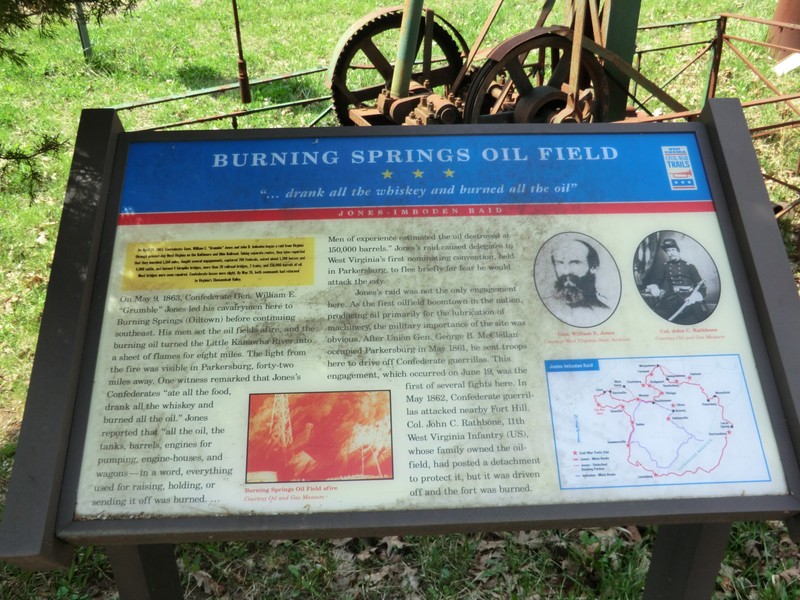
Burning Springs oilfield afire after the Jones-Imboden Raid.
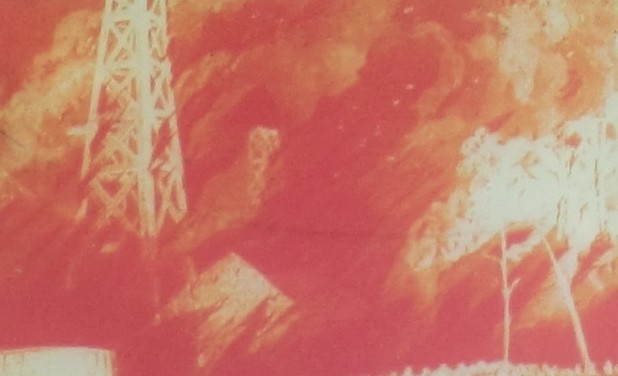
Current photo of the Rathbone oil well.
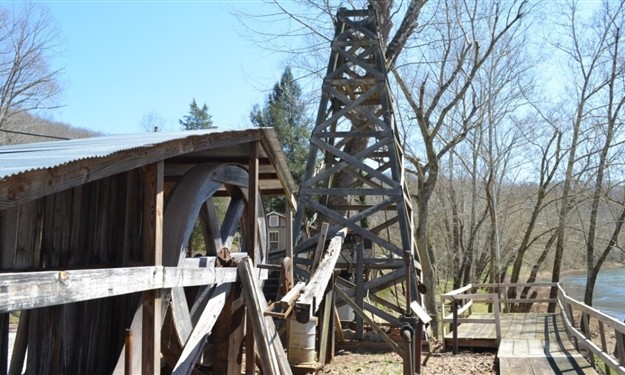
Confederate General William E. Jones, commander during the destruction of the Burning Springs oilfields.
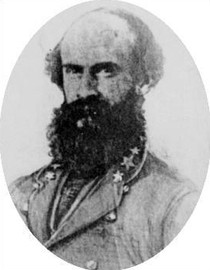
WV Historical Marker
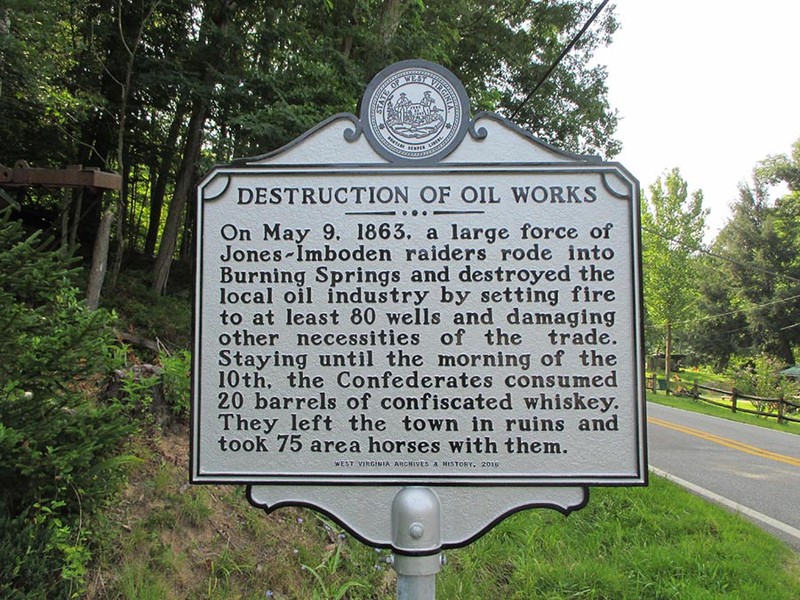
Backstory and Context
Text-to-speech Audio
The Confederate destruction of the oilfields at Burning Springs in what is now Wirt County, West Virginia was not one of the original goals of the Jones-Imboden Raid of 1863. Originally conceived as a small attack against the railroad bridge at Rowlesburg, the raid expanded to a joint campaign under Generals William E. Jones and John D. Imboden that sought to sabotage the entire infrastructure of the Baltimore and Ohio Railroad that ran through what was then the pro-Union area of western Virginia. The railroad was key to the transportation of troops and materiel between the eastern and western theaters of the war and with much of it surrounded by Unionist civilians there was little hope of the Confederacy being able to prevent the flow of either. By sending one contingent of rebel troops under Jones to target the bridge at Rowlesburg as well as other portions of that railroad in the surrounding area while Imboden moved on Buckhannon toward the south, Confederate leaders hoped to at least temporarily keep the Union from reinforcing the Army of the Potomac with western troops. On this count at least, the Confederates were successful, allowing the Army of Northern Virginia under General Robert E. Lee to secure victory at the Battle of Chancellorsville while Jones and Imboden obstructed the flow of troops toward the beleaguered Union forces Lee faced.
After Jones and Imboden united their forces at Buckhannon on May 2, they moved to occupy the town of Weston in Lewis County. After resting their troops and debating what they should do next, the two generals chose to split up once more. While Imboden marched toward Summersville in Nicholas County to secure a path for their retreat back into Virginia, Jones aimed for the oilfields in Burning Springs, stopping first in Cairo to sabotage a series of railroad bridges and tunnels there. Oil production began in Burning Springs the same year that the first oil well was drilled by Edwin Drake in Titusville, Pennsylvania in 1859. The first well in Burning Springs began as a salt well contaminated by oil seepage that produced seven 40-gallon barrels of oil per day. The next year, after drilling over three hundred feet below the surface, Cass and John Rathbone were able to expand operations to 500 barrels per day. By 1863 Burning Springs had become the highest oil producing region in the world, with eighty to one hundred steam operated wells filling about 250 barrels each. The oil was then transported by barge down the Little Kanawha River to Parkersburg where it was processed into lamp kerosene and lubricants for various kinds of machinery. The B&O Railroad alone used 200 barrels of processed oil a month from Burning Springs.
The residents of Burning Springs, which had grown to 6,000 from 100 between 1859 and 1863, learned of Jones’ approach on May 9 from a single rider that galloped into town at 7 AM. News fo the Confederates’ approach sent the townspeople into a panic. Many tried to escape, some running into the woods while others rode off in an effort to save their horses from rebel confiscation and still others loaded into barges tied up at the wharfs and began the journey to Parkersburg via the Little Kanawha. The town’s many saloonkeepers, meanwhile, hired local teamsters to carry their alcoholic wares down the road with instructions to hide them in the nearby forests. Much of this alcohol was never recovered, the teamsters either abandoning it so that they could escape more quickly with a lighter load or taking the liquor for themselves. By the time Jones and his men rode into town, it was nearly deserted.
As a result, the Confederates faced little resistance in their destruction of the oilfields and everything else associated with them in the town. They destroyed the barges that remained at the wharf in short order and moved just as quickly to set fire to the oilfields themselves. Before they did so, one of the Rathbone brothers offered them a bribe to desist but claimed that the money would have to be transported from Parkersburg. Unwilling to wait, Jones ordered his men to proceed. The workers at the oilfields, who had not heard the commotion from the town over the noise from the machinery in the fields, continued working until the rebels’ arrival but offered little resistance. After setting the fields themselves aflame the Confederates went to work on the storage facilities containing crude oil waiting to be transported, which included storage dams along the river. By the time they were done, the Little Kanawha had become a sheet of flames that stretched for eight miles around the town. Their mission accomplished, Jones’ men confiscated all the horses and food they could find and made time to drink every drop of whiskey they encountered for good measure. Thus sated, they departed for their rendezvous with Imboden in Summersville, the heat from the flames being too intense to for them remain nearby. As the fire raged it proceeded to engulf a portion of the town, destroying the Baptist and Methodist churches, several homes, and the Chicago House (Burning Springs’ most prominent hotel).
Sources
Ballard, James Buchanan. William Edmondson "Grumble" Jones: the Life of a Cantankerous Confederate. Jefferson, NC: McFarland & Company, Inc., Publishers, 2017.
Collins, Darrell L. The Jones-Imboden Raid: the Confederate Attempt to Destroy the Baltimore & Ohio Railroad and Retake West Virginia. Jefferson, NC: McFarland & Co., 2007.
Hardesty's Historical and Geographical Encyclopedia, Illustrated: Containing Maps of Each State and Territory of the United States; Special History of the Virginias; Maps and Histories of Roane, Calhoun, Jackson, and Wirt Counties, West Virginia. New York: H.H. Hardesty and Company, 1884.
“Jones' Raid on the Northwestern (Baltimore and Ohio) Railroad.” In United States Congressional Serial Set, 2766:107–37. Washington, D.C.: United States Government Printing Office, 1891.
McKinney, Tim. “The West Virginia Encyclopedia.” In The West Virginia Encyclopedia. West Virginia Humanities Council, March 25, 2014. https://www.wvencyclopedia.org/articles/727.
The Historical Marker Database
The Oil & Gas Museum
The Oil & Gas Museum
Wikipedia
"West Virginia's Sesquicentennial Highway Historical Marker Program." West Virginia Archives & History. Accessed October 7, 2020. http://www.wvculture.org/history/markers/sesqui/destructionofoilworks.html.
